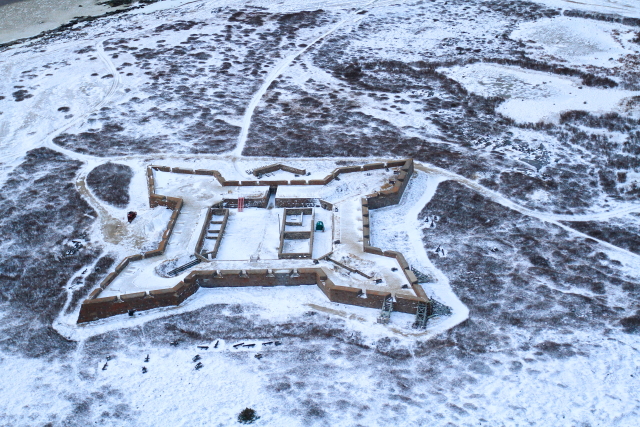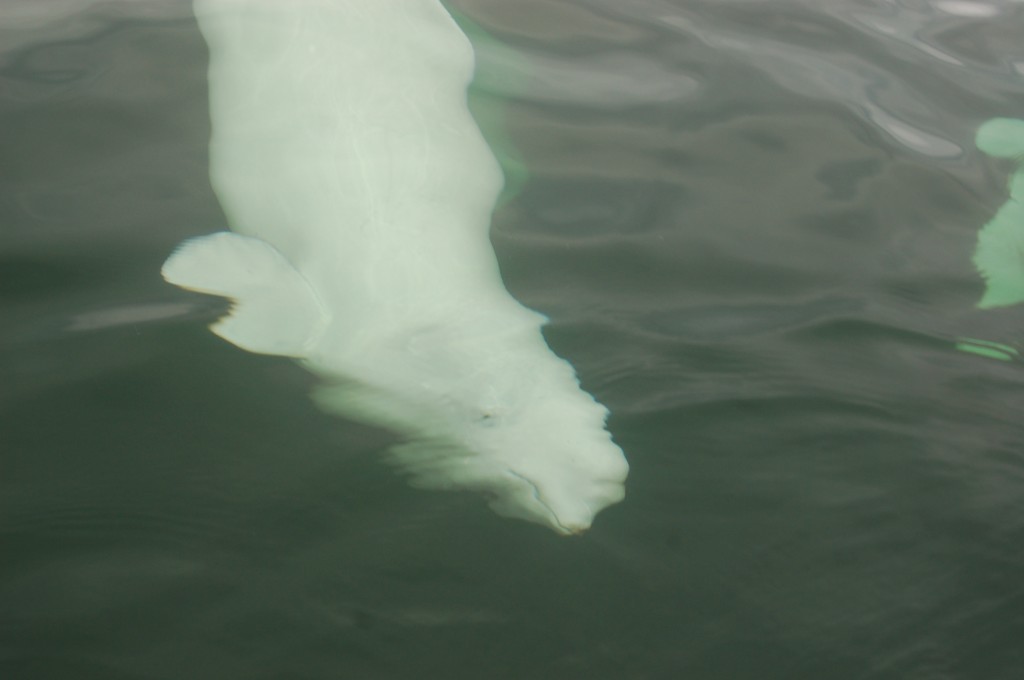The first inhabitants of the Churchill area date as far back as 1700 B.C. The pre-Dorset and Dorset people were members of the “Arctic Small Tool Tradition,” and they lived in partly underground pit houses, summer tents, and snow houses; tent rings and other artifacts from this culture can still be found in the area. The members of these cultures led a largely nomadic existence, harvesting both the small ringed seal in the Hudson Bay and caribou inland.

Ancient Thule tent ring still utilized by Inuit in Northern Manitoba. Virginia Petch photo.
By 1000 A.D., Thule people from the Western Arctic had arrived, displacing the Dorset culture. This new group of people, ancestors of the present day Inuit, hunted marine animals, such as whales, seals, and walrus, with harpoons. Around 500 A.D., Athapascan-speaking Dene from the west began to arrive in northern Manitoba. The Chipewyan Dene lived in the central subarctic, inland from Hudson Bay; barren-ground caribou made up a large part of their diet. Before European contact, trade among the Cree, Dene, and Inuit made up an important part of life in northern Manitoba in terms of economics, politics, and diplomacy. In fact, these age-old trading networks were later used in the fur trade for the movement of European goods and technology throughout the continent.
The first Europeans to arrive in Churchill were not looking for new places to live, but instead, were searching for a northwest passage to the spice-rich Orient. Jens Munk, a Danish navigator looking for just that, led an ill-fated expedition in 1619-1620 that wintered inside the mouth of the Churchill River. In contrast, late seventeenth century explorers were attracted to the Hudson Bay area, not as a passage to Asia, but as an area rich in fur-bearing animals, such as beaver, fox, and marten; beaver pelts (felted into fashionable hats) were in high demand in Europe at the time.

Fort Prince of Wales on the West side of the Churchill River.
A Chipewyan woman, known as “The Slave Woman,” helped to make peace between the battling Cree and Chipewyan almost a century later, thus enabling the Hudson’s Bay Company to establish a trading post in the area under the direction of Captain James Knight. Fort Prince of Wales was begun in 1717 and finished in the latter part of the eighteenth century, and Churchill became the site of the first astronomical observations made in Canada in 1769. It also became the departure point for the first overland journey made by a European, Samuel Hearne, to the Arctic Ocean.

Samuel Hearne’s mooring spot at Sloop Cove in Churchill. Everything Churchill photo.
Western Canadians’ demand for a prairie port eventually brought about construction of the Hudson Bay Railroad and the Port of Churchill. The last spike of the railroad was driven in 1929, and the first two ships loaded with grain left the port in 1931. Fort Churchill, located five miles east of town, was first established in 1942 by the United States Air Force as part of an overseas air operation to Europe. After the Second World War, Canada and the United States jointly sponsored a training and experimental center there. The base was officially closed in August of 1980.
Churchill Today
Churchill is one of North America’s most fascinating communities. The town has some residents who have never traveled more than 50 miles from home, yet it attracts sailors from around the world because of its international harbor. Even on its own, such a mixture of people and cultures is extremely interesting and is a great draw to the area.
In addition, the natural world of mammals, birds, and fish can be observed here unlike anywhere else. In the summer, you can watch beluga whales swimming in and out of the Churchill River with the Hudson Bay tide. During the fall season in Churchill, migrating polar bears can be seen at close range as they wait for the ice to form. Here, the Northern Lights dance across a winter sky from a point directly beneath the world’s heaviest concentration of aurora borealis activity. And if you are ornithologically inclined, you can count off the arrival of nearly 200 species of birds in the spring.

Beluga whale in the mouth of the Churchill River. Steve Selden photo.

